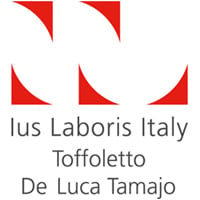
Italy Teams 2017
| Banca Popolare di Vicenza




Banca Popolare di Vicenza
The Banca Popolare di Vicenza (BPVi) banking group was the 10th largest retail and corporate banking group of Italy by total assets up until 2016. In June 2017 the European Commission rejected its admission to the “Precautionary Recapitalisation”, submitted to the Italian Economy and Finance Ministry (MEF). Failing that option, the Single Resolution Board of the European Central Bank – with which ongoing talks had been held over the period – decided that the bank was likely to fail and triggered the procedure under article 19 of the Italian Decree 180/2015. BPVi was then put into compulsory liquidation. Certain BPVi’s assets were transferred to Intesa Sanpaolo (ISP), a leading Italian bank, as well as all BPVi employees; among them, the BPVi legal team (few in-house lawyers have been then seconded to the LCA to support it, at least in the first phase). Leading the BPVi legal team of about 70, legal head Marco Tagliaferri commented: ‘I am sure the ISP legal team, which is excellent, will further grow benefitting also from the experience, competence, enthusiasm and quality added by the BPVi’s one’. Despite the several complex challenges experienced by the bank, the legal team has demonstrated utmost competence and dedication to supporting the bank. The outcome has not minimised the huge effort and extraordinary achievements reached by the legal team which displayed admirable ‘human and professional qualities’ bound to inspire other in-house counsel in the region. The legal function has been particularly praised for their unparalleled work and professional sense of adaptation in the last 12 months. The bank was exposed to a significant legal risk connected to both existing and potential claims filed (or which might be filed) by certain shareholders due to the troubles experienced by the bank in the last years. Tagliaferri emphasises that in reaction to such a unique situation, the team had first to develop a new methodology to properly and effectively deal with a legal case of such magnitude, ‘because it arose from a peculiar situation, therefore usual procedures were not suitable’. Accordingly, the size of the legal department grew significantly. On the other hand, the legal team had to be innovative to find a way to mitigate such a risk, which was threatening the existence of the bank. As a consequence, the team coordinated a working group (including few external advisers) which designed a settlement offer targeted to about 94,000 shareholders who bought the bank shares in the last 10 years – a move that was described as innovative and brave across the region. ‘It required huge and extremely complex legal analysis, covering several legal fields (e.g. banking, corporate, investment services) and a tremendous effort by the whole bank for execution. The outcome has been gratifying, about 67,000 people joined the offer, signing a settlement agreement with the bank, thus mitigating the overall legal risk the bank is exposed to’. On moving forward the legal team remains focused on new challenges the banking environment is facing: ‘Legal is a key function, asked not simply to provide legal assistance, but to lead the change. Everybody within the legal team is working hard to support the business in providing appropriate solutions for new needs emerging in the market, driving innovation and growth along a safe road’.